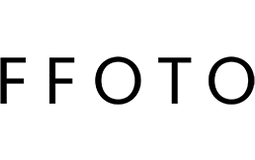Artist Spotlight: François Quévillon
 François Quévillon during the making of Variations for Strings and Winds, 2014. Photo © Nancy Lombart
François Quévillon during the making of Variations for Strings and Winds, 2014. Photo © Nancy Lombart
The interdisciplinary art practice of François Quévillon investigates how technology affects or redefines human cognition, culture, the environment, and our relationships to space, to time, and to one another.
Often what the viewer sees in Quévillon's compositions seems uncanny or alien -- yet somehow still recognizable as being part of "our world". These machine-rendered 'ways of seeing' reflect our environment and experiences back to us while reminding us that our familiar, human-centred construct of time and space is simply one way of processing reality.
To introduce collectors to these fascinating artworks, I invited Quévillon to talk about his practice and the inspirations behind some of his projects. There's a lot of mind-blowing stuff to take in here; feel free to ask for more information about any of these artworks: Craig@FFOTO.com
Craig D'Arville, FFOTO Co-founder and COO
 Tectonique and Météores (3763) | Météores – La Collecte | installation view of solo exhibition at Miguasha National Park (QC), Canada. 2018. Part of Rencontres internationales de la photographie en Gaspésie – CHAOS.
Tectonique and Météores (3763) | Météores – La Collecte | installation view of solo exhibition at Miguasha National Park (QC), Canada. 2018. Part of Rencontres internationales de la photographie en Gaspésie – CHAOS.
Where do you draw inspiration?
Recurring sources of inspiration are the observation of natural phenomena, the complexity of matter, and environmental changes. Examining imperceptible or remote phenomena often involves technological means, so sensing devices, many of which involve photographic processes, are also stimulating subjects to explore. Surveillance, the disruptions of digital technologies and of the Earth’s climate and ecosystems are recurring themes. These interests have led me to explore the interactions among environmental changes, societal issues, and technological developments.
Nébuleuses urbaines – Mont-Royal, archival inkjet print, 2010
Nébuleuses urbaines – Maison Bourgogne, archival inkjet print, 2010
A good example of my approach is the interactive installation Dérive. The work is made of point clouds of different locations that were mainly created using photogrammetry, a photo-based 3D scanning process. My works available on FFOTO use this technique. Nébuleuses urbaines comprises still images related to Dérive; they were made at the beginning of the project’s development in 2010. In Dérive, the millions of particles that digitally reconstruct the spaces are in a state of constant flux. They are transformed according to live environmental data collected via the Internet. The work is connected to sensors distributed on a planetary scale and a computer vision system that allows viewers to change the point of view in the virtual space. I started this project at a time when the details and quantity of information of online maps and real-time data were growing exponentially. Needless to say that it has continued ever since. Dérive probes the changing nature of our perception and representation of the world through these mediated experiences of the Earth and the constant monitoring of its environmental conditions.
Dérive Interactive installation, 2010-2015
When developing a project, does the inspiration suggest its execution, or do you find yourself fascinated by technologies that you then apply within an artistic context?
I wouldn’t say that I am fascinated by the technologies that I use, or refer to, in my work. I try to explore their aesthetic, poetic or creative potential while I simultaneously make an historical and critical examination of these technologies and how they affect culture, society and the environment. The works emerge from a series of interactions between an initial inspiration; we could call it a vague vision, research, and creation. My process-based practice involves field work and the topics that I investigate sometimes evolve while I am working on the projects. For example, I started working on the autonomous vehicles topic with the Algorithmic Drive body of works in 2016. The technologies and the questions raised were evolving rapidly and that influenced how the project unfolded.
Algorithmic Drive and Iterative Roundabout. Manœuvrer l’incontrôlable | installation view of solo exhibition at Expression, Centre d’exposition de Saint-Hyacinthe (QC), Canada, 2019. Curator : Eric Mattson
Your biography mentions “computational photography”. Can you describe what that means in plain English?
The relations between algorithms and photographic images have been at the core of my work for over 20 years. As I mentioned previously, with Dérive, photography is employed to make 3D scans using photogrammetry, and the analysis of a live video feed from a camera in the room serves as an interface to interact with the virtual environment. Algorithmic Drive also involved many computer vision systems and examined the concept of operational images. I combine camera and software in different ways across my work.
The definition of computational photography varies but it goes in that direction. It encompasses computer processing techniques used to extend or enhance what the lens and sensor of a camera captures. It can be relatively simple, and even banal in 2021, but the automatic image-stitching of panoramic photography, high dynamic range images and “AI” filters are computational photography techniques. Smartphone cameras rely on computational photography methods to enhance the quality of the images that their small optical sensors capture, and the device’s digital processing also gives them the possibility to produce images that optical processes alone cannot. More complex uses can be found in light field cameras, astronomical interferometer, and medical imaging.
An element that interests me, and that I like to recall, is the history of these techniques. Photogrammetry isn’t new and its origin isn’t digital. It’s almost as old as photography and was first used around 1840 to make topographical maps. A few years later aerial photography was practiced with balloons and with kites soon after. Today’s drones are a continuation of a series of devices photographers have been experimenting with for a very long time.
Points de repère – La Nuée, archival inkjet print, 2013
You explore how technology influences our perceptions and interactions with our environments, both real, and virtual or augmented. What are your hopes for how immersive technologies can positively affect our lives? And any worries about the negative aspects of the influence of technologies?
Immersive technologies can be interesting spaces of artistic exploration and offer unusual experiences. Use of these technologies can be found in sectors such as education, healthcare, entertainment, engineering, and scientific research, but I don’t think that they have held up to their revolutionary promises. There are many discourses mentioning that immersive technologies can lead to greater empathy and awareness about important issues. My hope would be that we reach these benevolent goals and that these positive aspects are not just marketing strategies.
If we go beyond AR/VR/MR/XR and include digital connectivity, it’s hard to imagine what the last year would have been without the Internet, social media, videotelephony and access to content online. As much as I appreciate all the possibilities available, they also felt invasive, distracting and amplified a desire to disconnect and move away from screens. The efforts made to move practically all art forms online during that period showed the limits of digital media experiences and that art or storytelling doesn’t need technology to be immersive. Well-conceived artistic experiences carried without technological mediation now seem to be more intimate, captivating, and powerful than before.
More generally, I have reservations about technosolutionism. Technological fixes can come with unintended or imperceptible consequences. We are increasingly aware of the energy and resources that the Internet and digital culture consumes, that many technological innovations are based on extractivism, quickly go obsolete and fuel surveillance capitalism. My work tends to focus on these concerns rather than on the utopian discourses about technological innovation.
Photosynthèse, lenticular print, 2020
Non-fungible tokens (NFTs) are being talked about everywhere in the art world right now. What are your thoughts about NFTs and how do you see them affecting how your work is collected and shared?
NFTs are a very polarizing topic. They caught my attention during Spring 2020 when all my projects were being postponed or cancelled due to COVID-19. It seemed like an interesting new territory to explore during lockdown as well as a potential source of income to sustain my artistic practice. After the initial aesthetic interrogations, the environmental impacts and speculative nature of NFTs dissuaded me from going forward. Of course, many aspects of making and showing art have carbon footprints, I have my own paradoxes and even put them forward in some of my works, but this one seems to be more avoidable than others. It’s a rapidly evolving field and several issues are being addressed following the debates of the last months, such as platforms using cryptocurrencies that consume considerably less energy. It will probably be a different landscape by the time you publish this.
The collection of videos, 3D animations, interactive pieces and code-based art by institutions and the traditional art market has always been challenging, so witnessing this right now is interesting, it opens doors for digital art practices. The automated resale royalties is also a feature that all artists could benefit from. I’m concerned about the long-term preservation of NFTs, how these platforms can lead to the formatting of art practices and I have the feeling that they are oversaturated right now. I’m still observing how things evolve and I keep my mind open for a formula that is adaptable to my work and ideals. NFTs and art using blockchain technology will be transformative. I think that we can expect a lot of changes and weirdness in the upcoming months; successions of hype, overhype and normalization that will disrupt some aspects of the art world.
What projects or exhibitions are on the horizon for you?
Like many others, the pandemic had a significant impact on my activities during the last year but I’m optimistic about the future. I have several residencies and exhibitions planned until the end of 2022 that I’m looking forward to. I will spend all summer doing field work in different parts of Quebec, where I will continue to explore digital materialism and environmental issues, but also make more contemplative and poetic pieces. There’s still uncertainty concerning my exhibitions and activities abroad, particularly for those that involve traveling. Some of them have been postponed for over a year now so I take it day by day. Meanwhile, I have plenty of projects to keep me busy.
Rooting : Le Rocher, 6 minutes 4K UltraHD seamless video loop, silent, 2020
--
Explore all listings for this artist at FFOTO.com/FrancoisQuevillon





